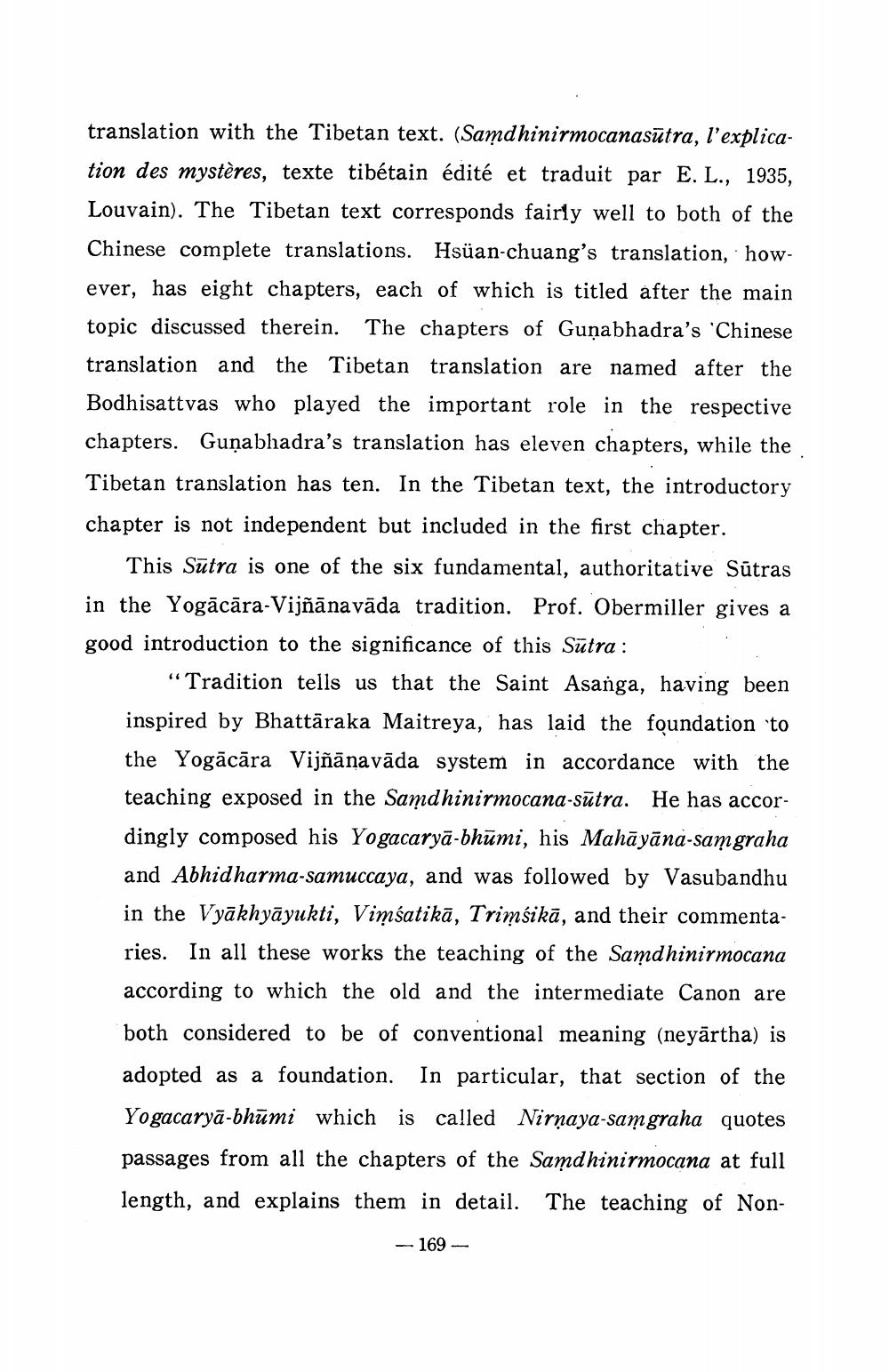Book Title: Analysis Of Yoga In Samdhinirmocana Sutra Author(s): Shinjo Kawasaki Publisher: Shinjo Kawasaki View full book textPage 2
________________ translation with the Tibetan text. (Samdhinirmocanasutra, l'explication des mystères, texte tibétain édité et traduit par E. L., 1935, Louvain). The Tibetan text corresponds fairly well to both of the Chinese complete translations. Hsüan-chuang's translation, however, has eight chapters, each of which is titled after the main topic discussed therein. The chapters of Gunabhadra's 'Chinese translation and the Tibetan translation are named after the Bodhisattvas who played the important role in the respective chapters. Gunabhadra's translation has eleven chapters, while the Tibetan translation has ten. In the Tibetan text, the introductory chapter is not independent but included in the first chapter. This Sutra is one of the six fundamental, authoritative Sūtras in the Yogācāra-Vijñānavāda tradition. Prof. Obermiller gives a good introduction to the significance of this Sutra: "Tradition tells us that the Saint Asanga, having been inspired by Bhattaraka Maitreya, has laid the foundation to the Yogācāra Vijñānavāda system in accordance with the teaching exposed in the Samdhinirmocana-sutra. He has accordingly composed his Yogacarya-bhūmi, his Mahāyāna-samgraha and Abhidharma-samuccaya, and was followed by Vasubandhu in the Vyakhyāyukti, Vimsatikā, Trimśikā, and their commentaries. In all these works the teaching of the Samdhinirmocana according to which the old and the intermediate Canon are both considered to be of conventional meaning (neyartha) is adopted as a foundation. In particular, that section of the Yogacarya-bhumi which is called Nirnaya-samgraha quotes passages from all the chapters of the Samdhinirmocana at full length, and explains them in detail. The teaching of Non -169Page Navigation
1 2 3 4 5 6 7 8 9 10 11 12 13 14 15 16
